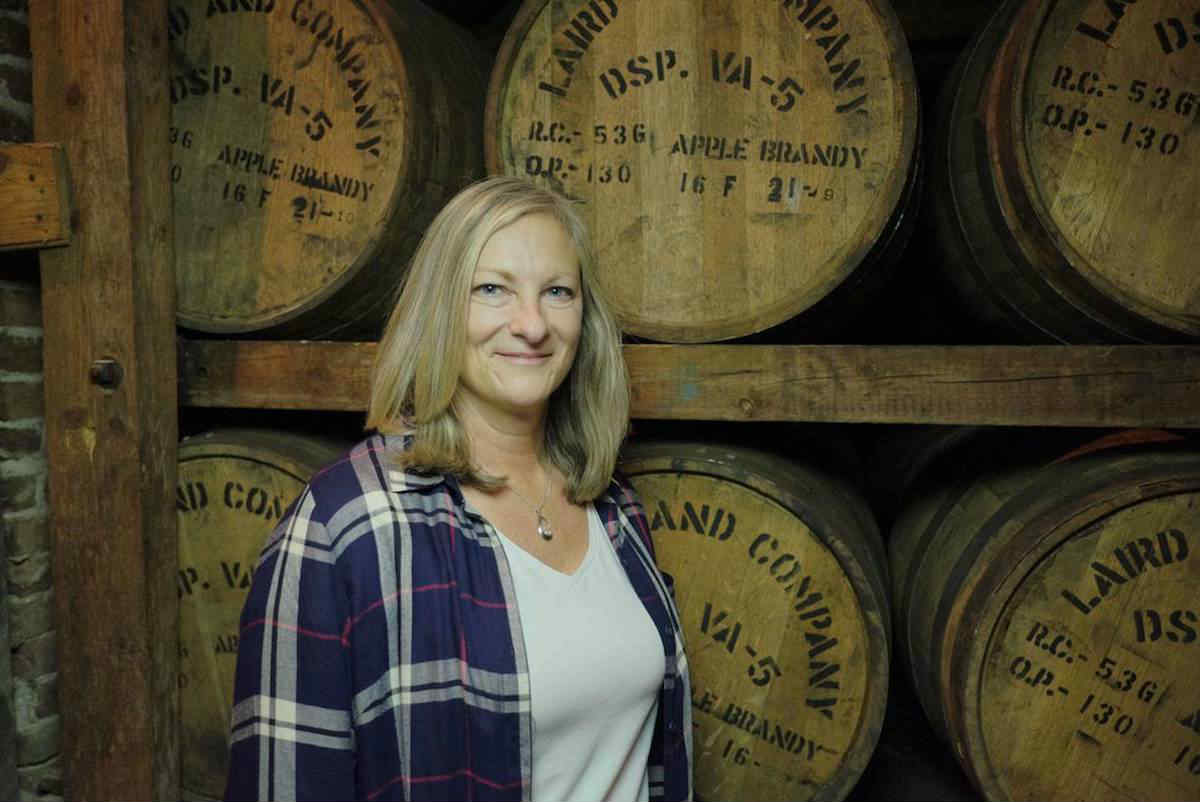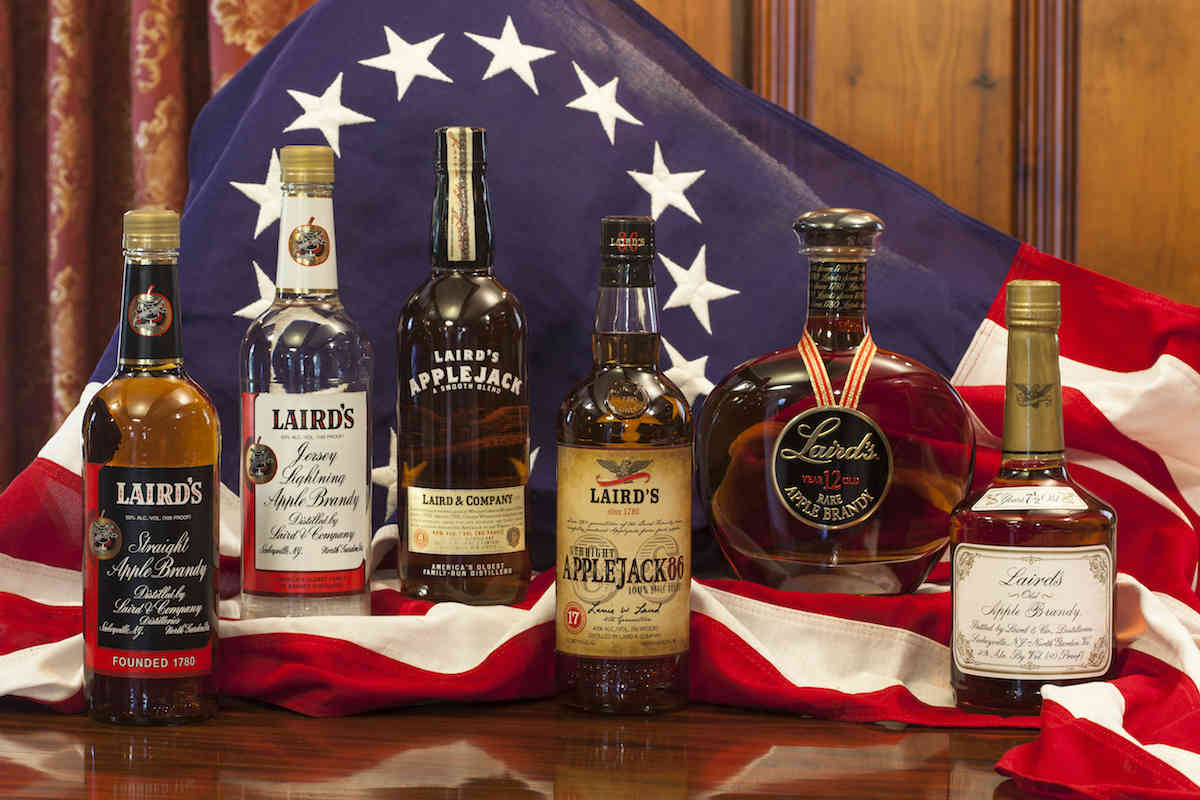Over the course of Thirst Boston this past April, I had the chance to meet Lisa Laird and attend her seminar titled “Applejack: America’s Native Spirit.” That’s a bold claim, but Laird herself is a testament to its truth: she represents the ninth generation of America’s oldest distilling family, the Lairds of Laird’s Apple Brandy.
From the role of the Laird family in the American Revolution to their hand in creating the blended applejack category, here are just a few of the things I learned from Lisa.
Applejack Is Apple Brandy
The only difference is the name. Lisa traces the term “applejack” to colonial times, when apple brandy was made through the process of freeze distillation, or “jacking.”
“Most colonists made their Applejack through jacking,” Lisa says. “They would take the hard cider and put it outside to freeze. The water would freeze, and as they kept re-freezing it, it would continuously condense the product. It was a very harsh style of applejack.”
The intense process also gave it such names as “Jersey Lightning,” “Corpse Reviver,” Essence of Lockjaw,” “Slug of Bluefish Quills,” and “Horn of Gunpowder.”
But don’t let those fanciful monikers scare you off from applejack—we’ve come a long way. “Obviously, that is not what we’re tasting today,” Lisa says.
George Washington Was a Fan
Lairds have been in the United Sates since before there was any such thing. The first—Lisa’s seventh and eighth degree great grandfathers—were scotch distillers fleeing religious persecution in County Fife, Ireland. They arrived in Monmouth, New Jersey, in 1678, and the family has only moved a half mile in the last 340 years. Those first American Lairds soon began distilling apple spirits, as the fruit—smaller and more bitter than apples today—was plentiful and not eaten. While Lisa says that distilling began almost immediately, the first official bill of sale emerges in 1780, which is used as the official founding date for the company.
By Lisa’s account, this was a good business to be in. Apple cider and cider spirits were a daily part of colonial life. Colonists often started their day with a swig of applejack, and preferred hard cider breaks to coffee breaks, the latter being too expensive an indulgence. Workers took a pull of cider from a jug before heading into the fields, and two-quart tankers of the stuff were passed around the dining tables of Harvard and Yale during mealtimes.
But distilling wasn’t the only family business. The Lairds also operated the Colts Neck Inn, a stagecoach stop on the popular New York-Philadelphia route, as early as 1770. Satisfied travelers increased the popularity of Laird’s Applejack, but the inn also brought the family into contact with American revolutionaries, who used the location as a meeting point. Lisa’s great-great-great-great-grandfather Robert joined the continental army with his brother Richard, and supplied Washington’s troops with applejack. In addition, their uncle Moses served as a guide to George Washington and later hosted the future first president in the Laird family home for dinner.
“He didn’t sleep there, but he ate there, which is pretty cool,” says Lisa.
Washington later wrote to Robert Laird about turning his apple crop at Mt. Vernon into spirits, and recorded the experience of distilling apples and building staves to store apple brandy in his diary.
Laird’s (Might) Have Been in the First Old-Fashioned

Applejack Old-Fashioned. Photo: Laird & Company / Facebook.
Origin tales of the Old-Fashioned abound, and Lisa has her own tale to contribute, centered on a famous racing horse named Fashion that won the great North-South race in 1842 and set a world record in the process. Fashion was trained by Robert Laird’s son, Samuel, and jockeyed by Samuel’s nephew Joseph Tilton.
“She was considered the best mare ever bred in the United States,” says Lisa. “My great, great grandfather—her jockey—was considered the greatest jockey of the North.”
Fashion went on to breed racehorses herself (two of her more legendary descendants are Secretariat and American Pharaoh), including one mare also named “Fashion.” As a result, the mother was then known as “Old Fashion.”
Lisa says that many cocktails were named for horses during this time period, and sees the emergence of “the Old-Fashioned” cocktail in print during the 1840s as more than a coincidence.
“There was a horse called Fashion, there was a distiller who was her trainer, and there was a distiller who was her jockey,” Lisa says. “So there is speculation that the first Old-Fashioned could have been prepared with Laird’s Applejack.”
Lisa can’t say this with absolute certainty, as an 1849 fire destroyed many family records. However, she does enjoy making Old-Fashioneds with Laird’s Straight Apple Brandy Bottled in Bond.
There’s Applejack, and Then There’s Blended Applejack
Laird’s was historically a producer of straight applejack, but drinkers today may be more familiar with their Blended Applejack. Blended applejack is a different category altogether, one that was created by Laird’s in reaction to America losing its taste for brown spirits.
“Into the ’60s and ’70s, the American consumer was moving away from heavy brown spirits and towards vodka and gin,” Lisa says. “That’s when you started to see many producers lightening up their brown spirits, and rye became blended. You started to see blended scotch rather than single malt scotch.”
But Laird’s couldn’t follow suit, as their product had to be a straight apple brandy. So in 1968 Lisa’s uncle Jack Laird petitioned the government to create an entirely new standard of identity for blended applejack. It passed in 1972, and defined blended applejack as a spirit made with at least 20% apple brandy and no more than 80% neutral grain spirits. Laird’s Blended Applejack soon appeared on shelves, which was bottled with 35% apple brandy and 65% neutral grain spirits.
The change allowed Laird’s to stay in business during a tough few decades for straight brown spirits, but not everyone was pleased.
“When I started in the company, we were still getting letters from old timers saying, ‘What did you do to my applejack? You messed it up, it doesn’t taste the same!,’ says Lisa. “We’d tell them we still had our straight apple brandy, but they were very upset with us.”
Straight Apple Brandy Is Making a Come Back

Lisa Laird. Photo: Laird & Company.
Modern drinking habits have been trending in straight apple brandy’s favor. The demand for Laird’s Straight Apple Brandy Bottled in Bond has been so high that the company released a new straight apple brandy in October 2017, dubbed Laird’s Straight Applejack 86. It’s bottled at 86-proof (in comparison to the 100-proof Straight Apple Brandy Bottled in Bond), and aged for a minimum of three years in once-used bourbon barrels.
“What we are doing is returning to our roots,” Lisa says. “This is what applejack originally was, and what Laird’s Applejack has been for many years.”
In addition to the Straight Apple Brandy Bottled in Bond and Straight Applejack 86, Laird’s makes three other straight apple brandies: the unaged Jersey Lightning, the 7½ Year Old Apple Brandy, and the exceptionally hard-to-find 12 Year Old Rare Apple Brandy.
Laird’s Is Staying a Family Business
One thing that hasn’t changed about Laird’s over the centuries is its core identity as a family business.
“Everybody thinks we’re very large,” says Lisa. “We’re still a small family business even though we’re the largest producer of applejack. It’s not a huge category.”
But it’s a growing one. Last year Laird’s crushed 7,000 pounds of apples, and has begun to distill twice in the fall and once in the spring with cold-storage apples to meet rising domestic and international demand. Whatever challenges may arise, it seems there will always be Lairds to meet them. Lisa noted that her son was about to graduate from the University of South Carolina and join the family business, marking its 10th generation.
“I’ll drink to that,” says Lisa.



